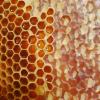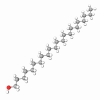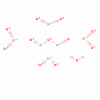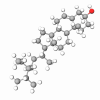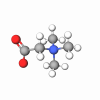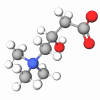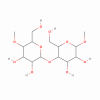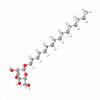Ammonium Acryloyldimethyltaurate/VP Copolymer (Aristoflex® AVC) is a synthetic polymer, a member of a polyester family, based on amido-sulphuric acid. It is the secret behind the new lightness of creams in tubes and jars. In addition, the polymer gives consistency to care products, or, as experts term it, a rheology modifier.
Thickener
Creams and gels consist of around two-thirds water, coupled with a few percent oils, plant extracts, care components, and other additives, such as perfume. Oil-containing products are generally supplemented with emulsifiers to obtain oil-in-water emulsions. Without thickening agents, such a mixture would be as watery as milk, could only be spread on the skin with difficulty, and, above all, would not be stable. Moreover, the oil would cream up after only a short time and destroy the valuable emulsion. But if small quantities of Ammonium Acryloyldimethyltaurate/VP Copolymer are added – much less than one percent is sufficient – the viscosity increases drastically, and a stable cream or lotion with an individually suited consistency emerges.
Gelling agent
Another unique feature of Ammonium Acryloyldimethyltaurate/VP Copolymer is that perfect emulsions can be produced without emulsifiers. Such cream gels have novel rheology and are ideal candidates for the light, melting textures in vogue today. Finally, unlike other thickening agents, Aristoflex is effective in mixtures that contain up to 80 percent alcohol – which is more than any good vodka possesses. This property gives one competitive advantage since formulations with alcohol as a freshness provider are in great demand.
Styling polymer
In addition, Ammonium Acryloyldimethyltaurate/VP Copolymer is a highly suitable thickening agent for gels, particularly for hairstyling gels, and is very popular among young people. Apart from water and alcohol, these gels contain a so-called “styling polymer.” By adding very high proportions of alcohol, one can produce a gel-like disinfecting agent for the skin, like those used in hospitals and doctors’ offices.Ingredients
Wide pH range
The polymer has made an additional breakthrough concerning the pH scale, in which chemists measure how acidic or alkaline a substance is. The smaller the value, the more acidic the substance. Human skin, for instance, has a pH value of 5 or 6 and is therefore in the slightly acidic spectrum. Hence we speak of an acidic protective coating for the skin. Modern, mild skin-care products generally lie in this area. However, more and more cosmetics products are formulated with fruit or alpha-hydroxy acids (AHAs). These products are taking the market by storm in antiwrinkle or antiaging products. Due to their acidic ingredients, these formulations have a pH from 4.5 to 4. At such pH values, Aristoflex AVC, a polymer sulphonic acid, does not lose its thickening property, unlike rival products based on acrylic acid.
Compatibility
Aristoflex® AVC is based on amidosulphuric acid as the monomer building block. This monomer can be combined with several other monomer building blocks. The respective copolymers vary in length and structure (linear, branched, cross-linked). Thus the properties of Aristoflex polymers can be adapted to meet the needs of specific cosmetics application fields.


